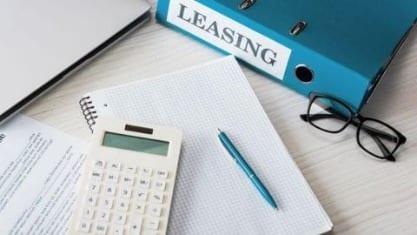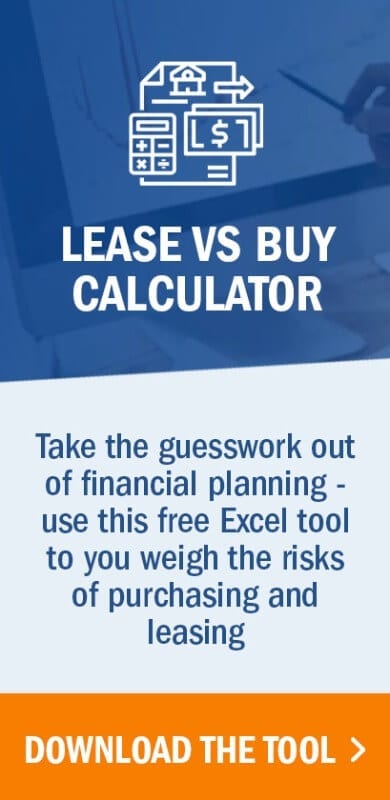Lease accounting changes
In conjunction with the transition to ASC 842, the AICPA made updates to the financial accounting and reporting (FAR) section of the exam specific to lease accounting. These were effective July 1st, 2019 per the first AICPA exam blueprint. In Area III, “Select Transactions,” test takers may be tested on the following topics:
- Balance sheet recognition
- Lease costs and variable payments
- Lease classification
- Financial statement disclosures
- Lease vs. buy analysis
Balance sheet recognition
The AICPA indicated exam candidates should be able to “calculate the carrying amount of lease-related assets and liabilities and prepare journal entries that a lessee should record.” (CPA Exam Blueprint, July 2019, FAR21).
These calculations are critical for financial reporting requirements under ASC 842. Conceptually, ASC 842 was introduced to provide users of financial statements increased transparency and visibility into future lease commitments. Accordingly, the AICPA instructed exam takers to be able to accurately perform these calculations. For further information on how to perform these calculations and how ASC 842 impacts the balance sheet, please refer to the articles below:
- How the Lease Accounting Changes Have Impacted Balance Sheet Liabilities
- How to Calculate the Present Value (PV) of Future Lease Payments in Excel
- Right-of-Use Asset (ROU Asset) and Lease Liability for ASC 842, IFRS 16, and GASB 87 Explained
The CPA Exam Blueprint also outlines that candidates should be prepared for questions on lessor accounting and be able to “calculate the carrying amount of lease-related assets and prepare journal entries that a lessor should record.”
Lease costs and variable payments
Another area of lease accounting outlined by the AICPA is the calculation of the lease costs a lessee will recognize through the income statement. Additionally, test takers should be able to “recall the appropriate accounting treatment for residual value guarantees, purchase options and variable lease payments” (CPA Exam Blueprint, July 2019, FAR21). Exam takers will need to understand the impact of residual value guarantees and purchase options under ASC 842.
For example, ASC 842 requires lessees to factor residual value guarantees and purchase options that are reasonably certain to be exercised into the initial measurement of lease payments and therefore the lease liability. Per ASC 842, only the amounts probable of being owed by the lessee as a residual value guarantee are included in lease payments, which differs from ASC 840. Additionally, in regard to purchase options, a change in the assessment of whether or not the lessee is reasonably certain to exercise an option will require remeasurement of the lease liability.
Under the new lease accounting rules, the treatment of fixed and variable payments is significant for a number of reasons. Most importantly, the treatment impacts balance sheet recognition requirements as fixed costs are included in the lease liability calculation under ASC 842, whereas variable payments are generally expensed as incurred. Additionally, the definition and treatment of initial direct costs, which impact the calculation of the ROU asset, has changed with the transition from ASC 840 to ASC 842. Please see How to Calculate the Present Value (PV) of Future Lease Payments in Excel for more information on lease costs and variable payments.
Lease classification
The July 2019 CPA Exam Blueprint highlights identifying lease classification criteria as another requirement for the exam. ASC 842 introduced a new test for lease classification, referred to as the “specialized use test.” In summary, if the leased asset is so specialized it is of no use to the lessor at the end of the agreement, the lease should be classified as a capital/finance lease. For a more detailed discussion on the lease classification tests, please refer to the article referenced below:
Financial statement disclosures
The increased transparency required by the new lease accounting standard will result in significant new quantitative financial disclosures for leases. Specifically, lease costs, cash flows, weighted averages and maturity analyses will need to be disclosed. Exam takers will need to understand the calculations required for these disclosures. The article referenced below provides an example and explanation of the new disclosures under ASC 842:
ASC 842 Disclosure Requirements: Example and Explanation
Lease vs. buy
The AICPA also stated exam candidates should be able to analyze financial information to make lease vs. buy decisions. With the increased balance sheet recognition requirements, companies will need to undertake significant lease vs. buy analysis going forward.
At a high level, the benefit of leasing is that the lessee does not take on the risk of ownership. However, by leasing, lessees will likely have to contend with rent increases over time. In contrast, when buying an asset an entity has full use of the asset and the rewards of ownership, but will have to contend with maintenance, taxes and insurance payments as a downside to ownership. These decisions are especially critical for manufacturing and real estate companies.
For further details on lease vs. buy decision making, please see the article linked below:
Lease vs Buy Analysis in Corporate Finance – How to Determine When to Lease or Buy an Asset
Miscellaneous changes
SOC reports
In the July 1, 2021 CPA Exam Blueprint, the AICPA outlines an emphasis on SOC 1 and SOC 2 reports. This is a direct result of the increase in entities relying on SaaS organizations, which in turn, creates an increased need for entities to rely on the SOC reports provided by service organizations.
Business process
Understanding an entity and its underlying business processes is also an increased focus of the exam. Specifically, in the auditing and attestation section (AUD) of the exam, CPA candidates will need to know how to identify and document significant business processes and data flows directly or indirectly impacting an entity’s financial statements.
Data analytics
Also in the July 1, 2021 CPA Exam Blueprint, the AICPA outlines an increased emphasis on data analytics. Specifically, within the business environment and concepts (BEC) section of the exam, an emphasis is placed on obtaining and transforming data to create analytics to support business decisions. Within the AUD section of the exam, the focus is on using audit data analytics to identify and analyze transactions with a higher risk of material misstatement.
Administrative
No changes are outlined in regards to the administration of the exam. The test will continue to be administered in four sections, each with their own focus:
- Auditing and attestation (AUD)
- Business environment and concepts (BEC)
- Financial accounting and reporting (FAR)
- Regulartion (REG)
Summary
As the business environment continues to evolve, the CPA exam is updated accordingly to reflect these changes. The July 1, 2019 exam updates focused on the new lease accounting standard. Additionally, the exam changes effective July 1, 2021 instructed users to focus on SOC reports, business processes, and data analytics as these activities become a more significant part of accounting for modern businesses.





